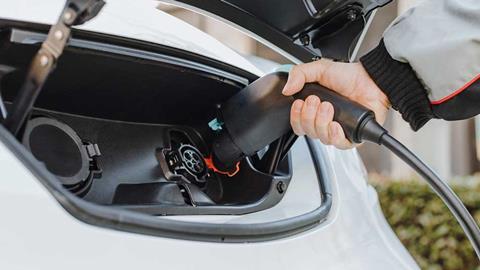As the climate change clock ticks, efforts to decarbonise transport intensifies.

The step-change needed to deliver on net zero and air pollution targets has led to a raft of measures being introduced by government in recent times.
And although fleet businesses will rarely greet regulation and compliance initiatives with enthusiasm, they can still act as catalysts for positive change and innovation.
Are you in the zone?
Newcastle’s recent Clean Air Zone (CAZ) launch, for example, is being followed in quick succession with the roll-out of a similar scheme in Sheffield, encouraging operators to audit their vehicles and scrutinise their utilisation.
Fines for non-compliant vehicles entering London’s ultra-low emission zone (ULEZ), meanwhile, have now been hiked to £190 ahead of its expansion across the city’s boroughs, and Transport for London (TfL) has just launched a supporting £110 million scrappage scheme.
Greening the supply chain
Further afield, the Frankfurt-based International Sustainability Standards Board (ISSB) has announced it will include Scope 3 greenhouse gas emissions reporting as part of its sustainability-related disclosure standards.
Scope 3 emissions are those that originate in the value chain. Although they’re beyond a company’s direct control, this ISSB move means that, for some organisations, greater visibility will soon be needed over supply chain sustainability – including freight transport operations.
The Task Force on Climate-Related Financial Disclosures’ (TCFD) already recommends that certain large businesses in the UK should disclose Scope 3 emissions “if appropriate”, and these latest standards are expected to heavily influence future mandatory reporting requirements.
Fleets look set to be increasingly judged on their green credentials, and many will ultimately need to evidence these. The call for them to decarbonise, it seems, will grow ever louder.
Emissions insights at the touch of a button
Telematics solutions offer a logical route to simplifying the calculation of transport-related emissions for fleet operators.
Webfleet’s fuel consumption and CO2 reports, for example, will automatically generate fuel usage and emissions information for every vehicle and journey, at the touch of a button.
The route to fleet decarbonisation
For many businesses there may be limited scope for reducing fleet journeys, but significant opportunities to transition to alternative fuels and powertrains, and to improve fuel economy.
By combining reporting intelligence – everything from vehicle location, routing, scheduling and driver behaviour scores to mpg and idling time, maintenance and fuel card information – telematics solutions such as Webfleet enable trends to be identified at the root causes of fuel wastage addressed.
A low mpg may be the result of journeys in residential areas or built-up locations, but equally it might be caused by harsh, inefficient, driving behaviour, which needs addressing through driver debriefings and targeted training programmes.
Changing the tyre policy on a truck to lower rolling resistance tyres, such as those being engineered with ever greater precision at Bridgestone, can also have an impact – saving up to five per cent in fuel consumption per label grade improvement. For an average long-haul truck, this translates to a saving of 1 500 litres of diesel per year and four tonnes of CO2.
Underinflated tyres also increase CO2 emissions and innovative developments at Bridgestone Mobility Solutions have signalled yet another significant sustainability development in this area. Manual tyre pressure checks can be time consuming and slow leaks difficult for drivers to detect, but by utilising sensors that continuously monitor tyre pressure levels and temperature, Webfleet TPMS automates this process.
Access to such critical insights and innovations will ultimately help fleets chart a course to a more sustainable and profitable future.









